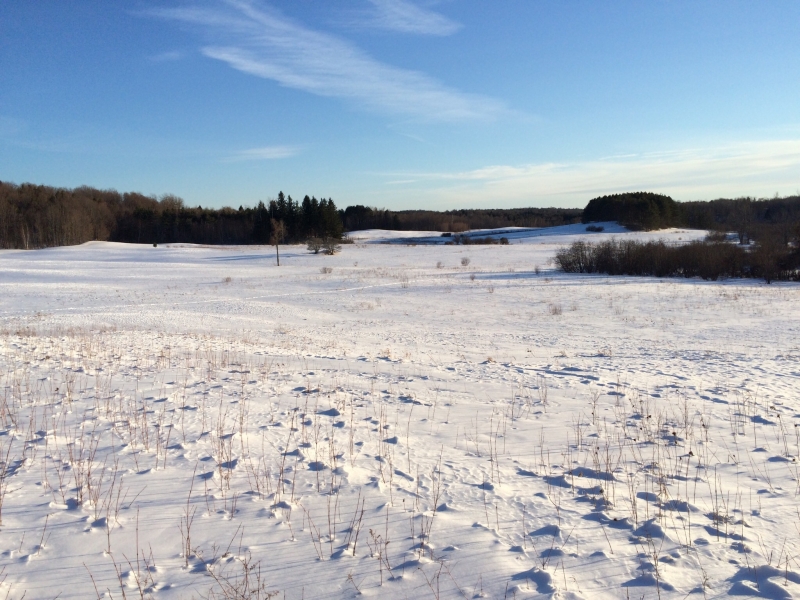
Recent snowfall in Canton. Photo: Emlyn Crocker
Snow Job
It is nice to know Mother Nature hasn’t forgotten how to make snow, but I suspect the recent dump we got was supposed to have been delivered in January. Probably it got held up at the border, or the packing slip got lost and the whole shipment has been sitting on a loading dock somewhere. Here we are a few days from the official start of spring, so maybe if we can find a tracking number we can send it back.
Actually, we are lucky to have this late-winter delivery. According to weather-warehouse.com, Canton got a mere 3.00 inches of snow in January 2017, and none in December 2016. February is not yet listed, but I know the total was way down for that month as well. Regionally, snowfall amounts varied between 12 and 20 inches over the recent 3-day storm, and we need the moisture, as well as the nutrients, contained in the snow for this year’s crops.
Snow has been called “the poor person’s fertilizer” because it’s a source of trace elements and more importantly, of plant-available forms of nitrogen, a nutrient often in short supply. When snow releases a whole winter’s worth of nutrients in a short time, the nitrogen value can add up.
Since air is 78% nitrogen, you’d think plants would have all they need. But atmospheric nitrogen, N2, is a very stable, inert molecule that plants are unable to use. Where does useable nitrogen come from? Some soil bacteria can “fix” gaseous nitrogen, converting it to water-soluble forms that plants can slurp up. Lightning also turns nitrogen gas into plant “food.” But this only accounts for a small percentage of the nitrogen found in snow.
Turns out snow is a better fertilizer today than it was years ago. There’s an outfit called the National Atmospheric Deposition Program (NADP), which basically measures stuff that falls out of the sky that isn’t some form of water. According to the NADP, the vast majority of snow-borne nitrogen comes from pollution.
Coal-burning power plants and motor vehicles spew out various nitrous oxides, not great for us to breathe, but when washed into the soil, are nitrate fertilizers. Ammonia, another form of plant-available nitrogen, escapes from manure and commercial urea-based fertilizers.
So how much fertilizer is in the snowdrifts blanketing the North Country these days? Because we’re the “beneficiaries” of more pollution than most of the West and Midwest, we get more nitrogen in our snow than the national average, somewhere around 12 pounds per acre annually. Depending on the crop, a farmer may apply on the order of 150 lbs. of nitrogen per acre, so 12 lbs. is small potatoes. Literally. But it’s not chopped liver, either (which is high in nitrogen but not an ideal soil amendment).
Snow-based nitrogen can be a significant boon to ecosystems on marginal soils. In a year with abundant snowfall, sugar bushes, timber lands and pastures undoubtedly benefit from “poor person’s fertilizer.” Snow brings a fair bit of sulfur, which is an essential plant nutrient. Sulfur also can make soil more acidic, which isn’t always a good thing, so let’s call it a mixed blessing.
Obviously, snow provides soil moisture in early spring. What’s different about snowmelt as compared to rain is that snow melts gradually enough that nearly all its moisture gets into the soil. This gentle percolation is in contrast to summer rain, a percentage of which—sometimes a large portion—runs off and doesn’t benefit the soil.
When topsoil is saturated, or as agronomists put it, at field capacity, excess water seeps down through the soil profile. Eventually it becomes groundwater, raising the water table and recharging our aquifers. Nearly all water wells in the region tap into unconfined aquifers. This just means that the water that goes into the ground in a given location is the water that comes out of the well there. These aquifers depend on snowmelt as well as prolonged heavy rains of spring and fall for recharge.
Those who work in field and forest should take heart at the mounting snowbanks, not despair of them. Now if you’ll excuse me, I’m headed to the garden with the rototiller to plow up some snow. I’m pretty sure I have a packet of Mixed Frozen Vegetables seeds around here somewhere...

